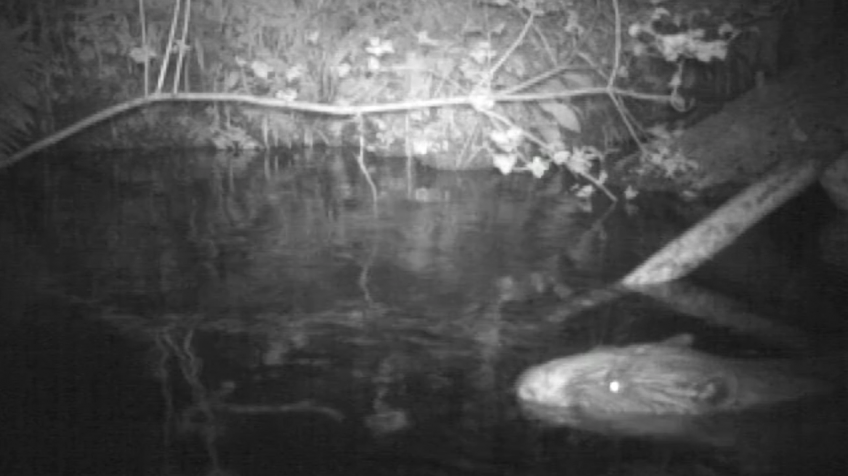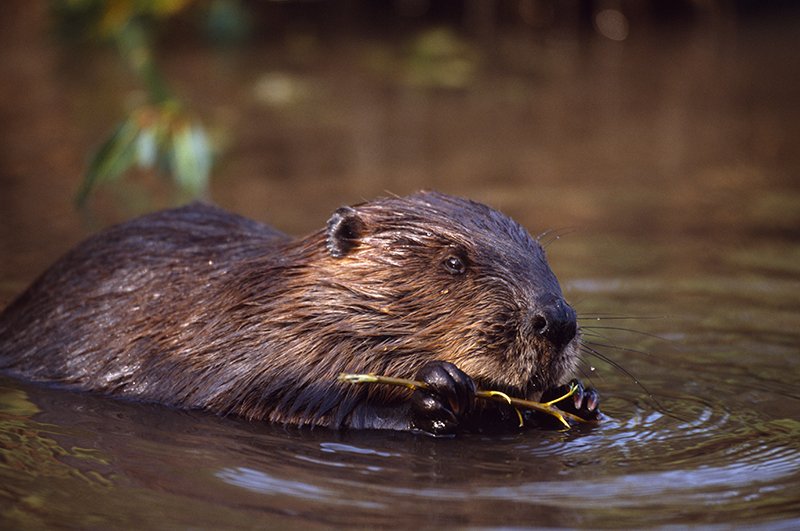Why can’t we talk about beavers?
Ending old conflicts about land management and wildlife means facing up to hard conversations positively, not hiding from them. The rush to trap a small family of beavers in Strathglass shows that the Scottish government is being overtaken by England’s increasingly progressive agenda for land use and the natural environment.

We slotted the camera trap’s memory card, pressed play, and squinted at the screen. Two shapes formed in the twilight on a river bank. The first, thrillingly, emerged from the water as an adult beaver, almost certainly escaped from one of two private beaver collections nearby. The second though, is that…a kit?
It was, and it was not alone. The beaver lodge we’d stumbled on was home to a family of six – two parents, two yearlings from 2016 and two kits born last spring. The family had clearly been there for years and caused no issues. Yet a few months later, three of the beavers had been trapped under order from the government and died in captivity.
How did it come to this? Trees for Life is a rewilding charity that supports bringing beavers back to rivers they are unlikely to spread to unaided. Ecologically, we know that beavers can thrive in the Highlands, just as they did until hunting made them extinct around 400 years ago. The key question for beavers now is whether society wants them or not – do we feel that the benefits outweigh the problems and can we meet the practical challenges of managing their impacts on our livelihoods? Our plan had been to use a hypothetical example of a beaver release to help us get a community’s answers to these questions. We were gobsmacked when the hypothetical beavers in our Strathglass-based case study became real animals right in front of us.
At first it seemed that our hopes of opening a local discussion about beavers and their impacts would be lent an unexpected focus by the beaver family. Regrettably, Roseanna Cunningham saw it differently. The Cabinet Secretary for the Environment made her decision to trap the beavers soon after hearing about this tiny group and sadly, the rest is history.
We started talking with the local community before the trapping started and had interesting conversations with all shades of opinion.
We started talking with the local community before the trapping started and had interesting conversations with all shades of opinion. A lot of people were in favour of beavers and we were slightly surprised at how some land use interest groups were prepared to contemplate the presence of beavers even though they had some concerns. Only a very few were against the idea, although those who are against beavers may not have joined the conversation – why would they with the government so clear that the family will be trapped regardless of what local people think? We are deeply frustrated that a positive opportunity to listen to all sides of the debate was stifled by the government.
We cannot work out why the Cabinet Secretary is so set on trapping this beaver family. This publicly funded trapping operation is not cheap. There are two other beaver populations in Scotland and community consultation is a prominent feature of the government’s approach to both of them. Why are people in Knapdale and Tayside allowed to consider the pros and cons of beavers while those in Strathglass are not? We wrote to Ms Cunningham four times last autumn and, after a helpful intervention from David Stewart MSP, eventually received a reply in January. If anything, this has left us more confused than we were before.
Her letter said that she was anxious to prevent a repeat of the way the beaver conflict on Tayside had developed partly from inaction. Fair enough, but we had already pointed out why there is no comparison between the Strathglass situation and what drove the circumstances on Tayside.
Tayside featured a much greater number of founding animals occupying territories across a large river catchment. By the time trapping was attempted several years later, beaver numbers were too great for any hope of success. In contrast, the Strathglass beavers are not being reinforced by illegal releases and are so few in number that they are incapable of growing significantly for at least two years. In fact, following last autumn’s fateful trapping, there may be no females left enable any population growth at all.
This leaves plenty of time for the community to have a meaningful conversation about beavers, unburdened by Tayside’s controversies or the prospect of rapid population growth. For some reason though, the Cabinet Secretary would rather ignore the facts than consult local people.

Moreover, she told us that she does not want to contemplate further reintroductions until the problems on Tayside have been resolved. There is no doubt that Tayside needs practical solutions. However, the unique history there has created difficult circumstances in which to seek resolution. The contrast between this deeply conservative approach and the progressive attitude to beavers being shown by the Environment Minister in England is telling. If we are waiting for the Tayside conflict to end before we can even talk about beavers elsewhere, what chance is there of us having a mature conversation about these issues in the next decade?
We believe there are compelling reasons for Scotland to consider wildlife reintroductions and to do so in a balanced way. Open-handed dialogue to develop a shared understanding of the potential costs and opportunities associated with reintroductions is vital if we are to avoid further debilitating conflict between land use interests. The history of wildlife management in Scotland suggests we have much to learn about dealing with the clashes in values that all too often undermine these discussions. Opportunities to break the old patterns of conflict and seek common ground are rare. These opportunities should be grasped, not swept under the carpet.

